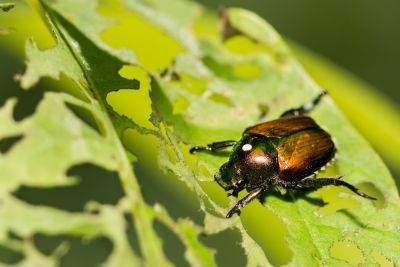With copper-colored wings and an emerald head, the Japanese beetle is pretty, but devastating.
Eastern Eyed Click Beetle
24.07.2023 - 11:58 / hgic.clemson.edu
The eastern eyed click beetle (Alaus oculatus) is found throughout South Carolina. Also known as the eyed elater, this is one of the larger click beetles in the region, with adults sometimes reaching almost 2” in length. They have two large black spots near their head that look like large eyes, which are thought to be for scaring away potential predators. Adults feed on nectar and are somewhat common around hardwood forest areas.
Eastern eyed click beetle larvae are known as wireworms and typically live in rotting stumps and logs where they are predators of other insects – especially larvae of longhorned beetles that might also be feeding in the dead and decaying wood. This predaceous behavior is unique in this group of beetles, as most wireworms are pests of agricultural crops.
Click beetles get their name because of their ability to snap their bodies to right themselves after getting turned over. Adults have a mechanism that allows them to arch back and, with a loud “click”, snap their body and flip over.
Eastern eyed click beetles are harmless to people or pets, so if you do see one, just enjoy the sight of one of South Carolina’s largest click beetles!
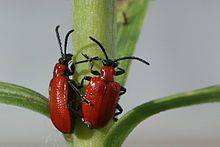
Lily Beetle Spotting & Prevention
What has got 6 legs, a head, 2 eyes and red wings and is not a dice game of Beetle. It is the red lily beetle Lilioceris lilii that consumes large quantities of one of our favorite plants.
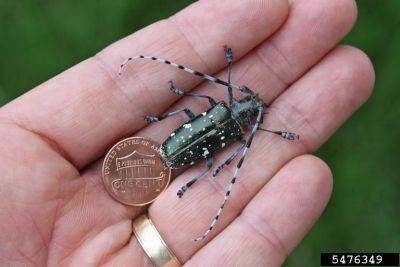
Asian Longhorned Beetle – A New Invasive Tree Pest In South Carolina
The Asian longhorned beetle (ALB; Anoplophora glabripennis) is not easy to miss – adults of this large, black beetle with white spots, black and white striped antennae, and blueish feet are between 1 and 1 ½” long (Fig. 1). ALB larvae are equally striking as the large, white segmented larvae can be nearly 2” in length (Fig. 2). Established populations in the U.S. are found in Massachusetts, New York, and Ohio, and a new infestation was recently found in Charleston County, South Carolina.
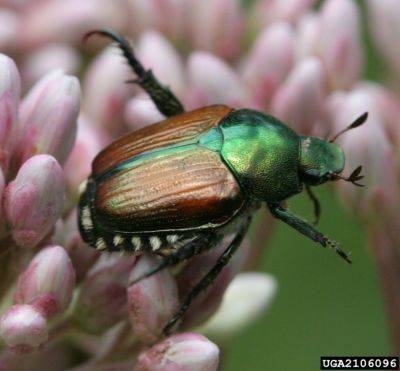
Japanese Beetles
A lot of attention recently has been on periodical cicadas, which are coming out of the ground after 17 years across parts of the Southeast and much of the Mid-Atlantic region. However, another insect is about to come out of the ground in South Carolina too, and this one is not just a novelty – it can completely defoliate many plants in your yard. That’s right, folks, it’s almost Japanese beetle season!

Stag Beetles
Few insects can grab your attention like a giant stag beetle. Stag beetles are in the insect family Lucanidae. Both females and males of many Lucanid species are impressively big, but the males, with their long mouthparts that look like antlers on a stag, are amazing and intimidating. While they are also called pinching bugs by some, they are quite harmless. The males have prominent mouthparts not to bite people but rather to impress females and to push, pull, and even throw rival stag beetles away from their future mate. Think of it as two bucks fighting over a doe in the forest.
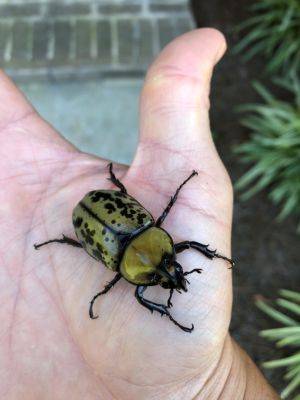
Eastern Hercules Beetles
The eastern Hercules beetle is one of the largest and heaviest insects in the U.S. In South Carolina, there is only one Hercules beetle species, Dynastes tityus. These insects are a type of beetle in the family Scarabaeidae – the same family as June beetles, Japanese beetles, and dung beetles.
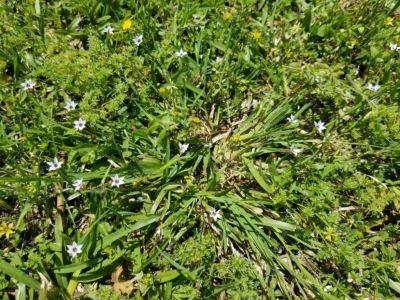
Weed of the Month – Blue-eyed grass
Blue-eyed grass (Sisyrinchium angustifolium) is a beautiful native plant in the iris family. This perennial plant looks very similar to thicker bladed turfgrasses and can survive in the lawn without detection until it blooms in April. This plant thrives in moist, well-drained soils. Although once established, it can occasionally tolerate dry conditions.
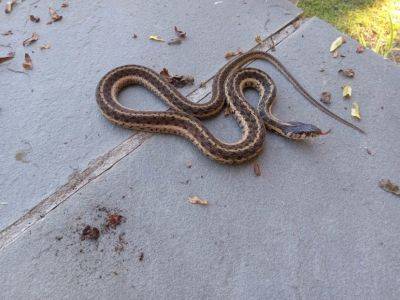
What Is It? Wednesday – Eastern Garter Snake
This is an Eastern garter snake. These nonvenomous snakes are pretty common in South Carolina and are active most of the year.

What Is It? Wednesday – Squash Beetle Trenching
The light-colored tissue we see here is the result of squash beetle behavior known as “trenching.” Trenching cuts off (at least temporarily) the translocation of cucurbitacin defense compounds to preserve the palatability and quality of the squash foliage feeding site. The beetles in this particular field were sprayed and killed after trenching this section of the leaf, so the yellow tissue remains and was not eaten. Similar behavior occurs with other insects, such as dogbane leaf beetles.
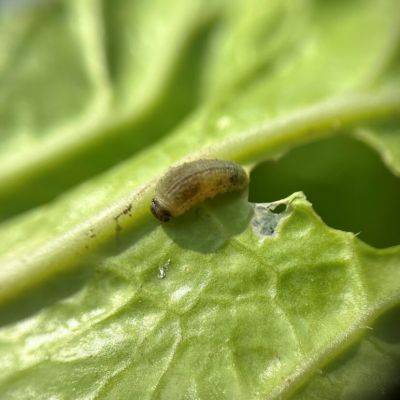
What is It? Wednesday – Yellowmargin Leaf Beetle and Vegetable Weevil damage
This Napa cabbage is being fed on by larvae of both the yellow margined leaf beetle (YMLB, Microtheca ochroloma) and vegetable weevil (Listroderes difficilis). YMLB can be a significant pest for organic production, especially turnips and Napa cabbage, which they prefer.
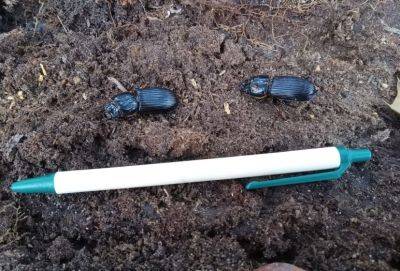
What is It? Wednesday- Bess Beetles
These beetles were found under a decaying log in the woods. They are bess beetles, also called horned passalus beetles (Odontotaenius disjunctus).
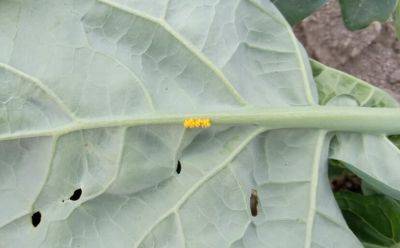
What Is It? Wednesday – Lady Beetle Eggs
These orange-colored things stuck to the bottom of a collard leaf are a cluster of lady beetle eggs. Lady beetles are great insects to have around, especially if you have problems with aphids, their favorite food. Adults eat aphids whole, while the nymphs, seen below, pierce and suck out the internals. We have numerous species of lady beetles in South Carolina that range in the number of spots on their back and color from red and orange to black. Read more here.
